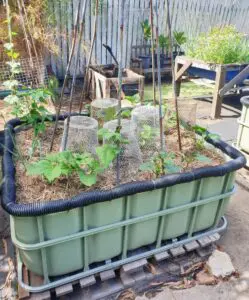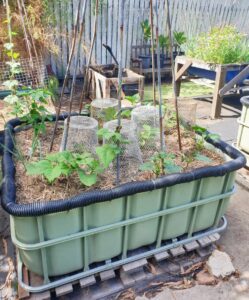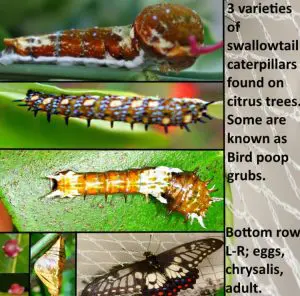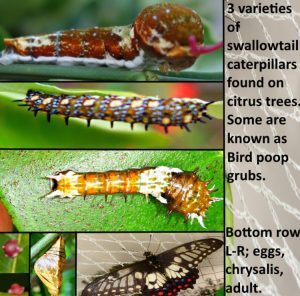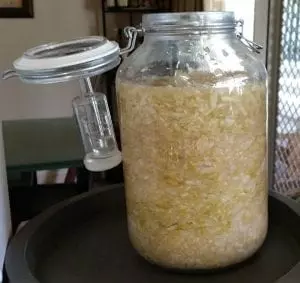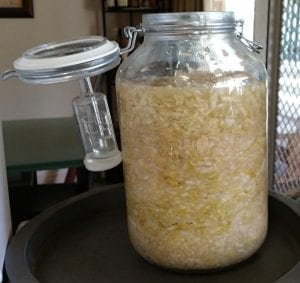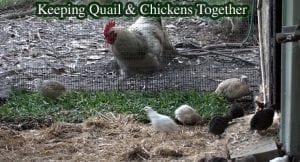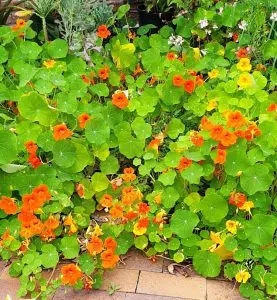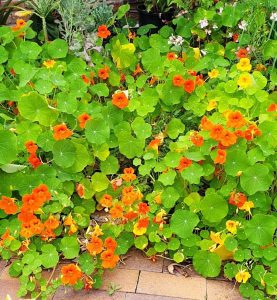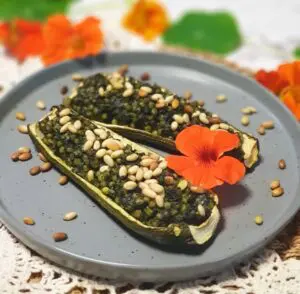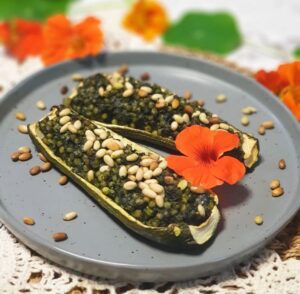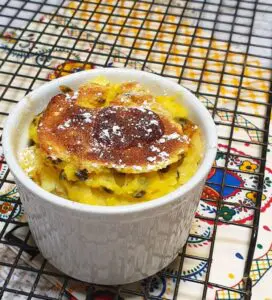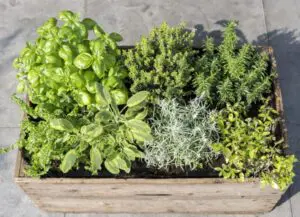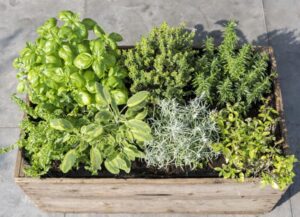September means spring in my part of the world and at spring time no matter where in the world you are one of the best plants to grow is the strawberry.
As we all know, strawberries are a divine and decadent fruit but they can be pricey to buy from the markets so I grow my own. Being a tennis lover, when I think of strawberries I think of the famous strawberries and cream at the Wimbledon Tennis Open. Coincidently, I play tennis at my local tennis club with a strawberry farmer called Adrian and he has been kind enough to teach me a few tricks of the trade about growing the tastiest strawberries ever.
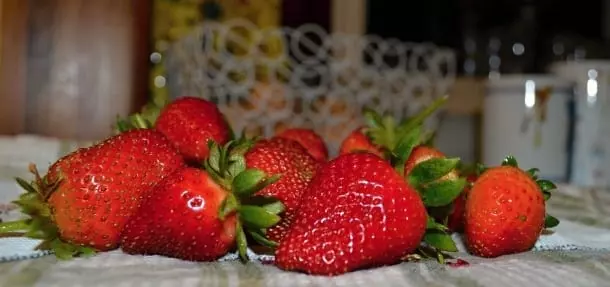
Image above are of home-grown strawberries. Throughout the season a small patch of strawberry plants will produce a few handfulls of berries once or twice a week.
And, in this article I'm going to pass on what I have learnt from Adrian and also the knowledge I have gained from propagating my own strawberries and doing my own testing in the field to find the best way to grow them.
Why grow strawberries?

Besides how good they taste and obviously healthy they are (being high in vitamin C and a good source of folate), strawberries are also a very giving fruiting plant. Grown at the right time with good preparation and some care along the way, strawberries will reward us with months of cascading fruits. Strawberries are normally pretty expensive to buy per punnet at the supermarkets; however, even if a person doesn't propagate their own plants and buys them as seedlings they'll still get their money back several times over via the fruit produced.
Home-grown strawberries taste amazing too and they are better than many fast grown commercial strawberries – I don't care what anyone says, I can taste the difference and many (not all) commercially grown strawberries are big on size and bland on taste.
When we grow our own strawberries we know what (if any) chemicals are used on them. Many commercially farmed strawberries are regularly sprayed for pest and disease because the consumer demands big shiny unblemished berries on the supermarket shelf and farmers are under pressure to make a profit from their crops. But, I don't want to bash commercial strawberries too much and the truth is there are some very good locally grown commercial strawberries on the market.
If we keep an eye out, local strawberries are often sold cheaper because they have less transport cost. Plus, at the end of the season most farmers are eager to dig their strawberry fields in and start preparing for next season so keep a look out for pop-up stalls and “pick your own” signs in rural areas or drastically reduced prices for local berries at the super and farmers markets.
Strawberries may not store too well but they preserve fantastically! Strawberry jam is a given, so to is strawberry topping, and dehydrated strawberry pieces last for ages, go wonderfully on breakfast cereal, and are so easy to do (in my Excalibur dehydrator).

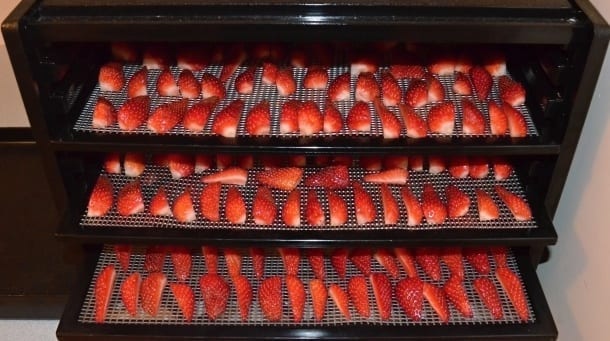
In the image above, strawberries are simply quartered (smaller varieties can be halved) no need to cut thinly or apply lemon juice or citric acid as they will dry just fine. Set Excalibur dehydrator on "fruit" temp and dehydrate for approx 12 hours.

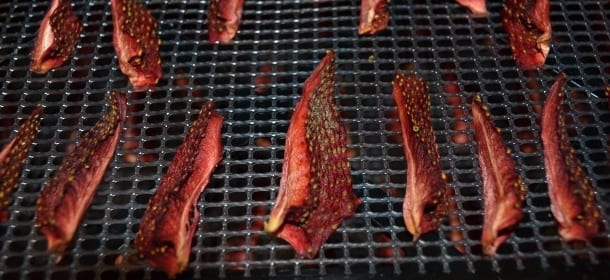
After drying the strawberries should be pliable but not moist – some will be crunchy but that's fine they'll still taste great (image above).

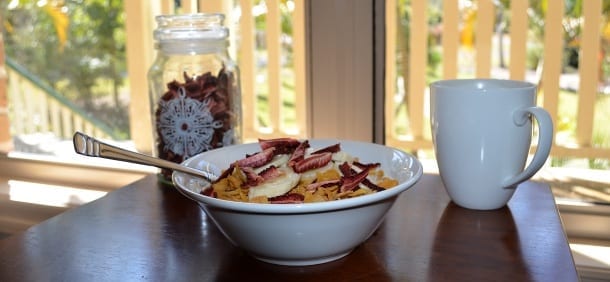
Store dehydrated strawberries in a jar (I use our old coffee jars) or in zip-lock bags and use on cerial, in cooking, or they taste awesome just as is for school lunches and snax.
Types of strawberries
Strawberries are classed as a soft fruit and part of the berry family along with cane berries, blackberries, and blueberries, as examples. There are many different varieties of strawberries we can grow at home and they are all good. Strawberries are usually grouped by when they mature and start bearing fruit like: early, mid-season, late, or ever-bearing (fruits the whole season – spring through to end of summer). Knowing this detail about strawberry plants can be handy when planning to grow them because a gardener can plant several different types and have a full, extended growing season.
But to be honest, I find other traits much more important (like size and flavour) than when plants are likely to bear fruit and I have found many so-called early, mid, or late varieties turn out not to be what they claim and end up turning into a mass of strawberries all fruiting at the same time!
However, some are better than others and rather than give a list of names the variations below are (I think) a better way to explain the differences:
-
Gimmicky varieties – These are strawberry plants sold retail more for the flare than the practical. I steer clear of gimmick varieties because most just don't produce good strawberries and as pretty as all strawberries are, the reason I grow strawberries are to eat not look at. Some examples of gimmicky varieties are: pretty flowers (like pink instead of white) but poor or scarce fruit; unusual shaped fruit (like long cylindrical) are hopeless; or “all season” claims usually means plants which are hardy but produce small sparse fruit.
-
Alpine or small varieties – These type of strawberries may be the original varieties first eaten by humans; however, I prefer not to grow them. They do taste excellent, but harvesting is difficult due to the size and if they are not harvested immediately when ripe they quickly deteriorate. Small varieties are definitely not for me.

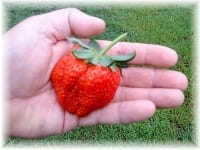
-
Medium to large varieties – This is the type of strawberry I prefer as I am not a seeker of super sized strawberries just for the “bigger is better” way of thinking. Medium and large ripen at a reasonable pace not too fast or too long, taste good, and give the bugs or slugs less time to find them before they're fully ripe.
-
Heaps of varieties – There are hundreds of strawberry varieties to choose from and usually only a few of the best are sold from good nurseries. Normally, the local nurseries grow and sell the types that grow best in their area and thus should perform in the area where we live (if we buy local). Also, take notice of what is on the shelves in the shops or local markets, often, the variety is shown on the packet or the person at the market will tell you. Then, find and grow this variety as it is obviously worth growing. In my area, and down the coast to Sydney a variety called sweetheart is widely accepted as a solid producer of good sized and tasting strawberries.
Growing strawberries by the book
Soil
Strawberries like a free draining, slightly acidic soil with plenty of organic matter and manure for plant food and moisture retention.

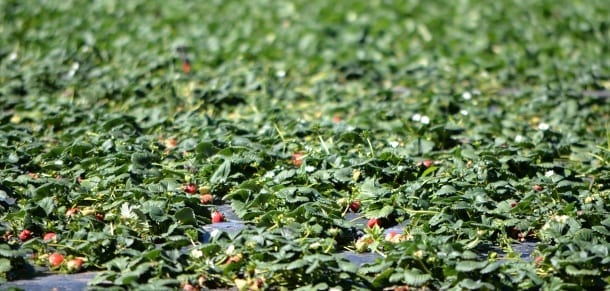
Planting
Although strawberries can be grown by seed, the far better way to grow them is via pups or runners the mature plant sends out at the end of its growing season. The runners are “pushed” away from the mother plant via a tendril and on the end a new baby plant develops. The baby plant gets its nutrients via the mother plant until it has established its own root system into its own patch of soil.
It's these runners, which are removed from the plants and used as new stock by potting them up or planting them directly into the new garden bed.

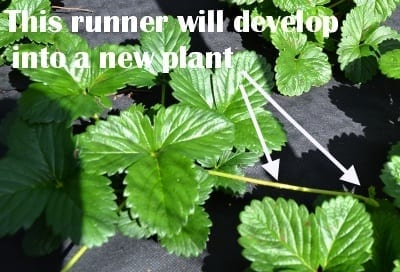
Newly planted runners must be watered regularly until good root development (especially in light sandy soils and pots) or they may perish.
Sun/part shade – Strawberries can grow ok in part shade; but honestly, full sun or sunny for most of the day is best.
Strawberries can withstand cold weather and frosts but the fruit and flowers will suffer with frost. If a frost is forecast, commercial farmers ensure the sprinkler watering system is enacted in the early morning to help stop the burn. Home gardeners can protect strawberry plants from extreme cold by garden cloth, straw, or other coverings.
Fertiliser
Do feed throughout the season with a high potash fertiliser and don't over feed with too much nitrogen or the plant will grow leafy with less fruit and become susceptible to pest and disease.
Tips from Adrian the strawberry farmer
Here are some special tips given to me by Adrian who farms 200,000 strawberry plants each season for a living.

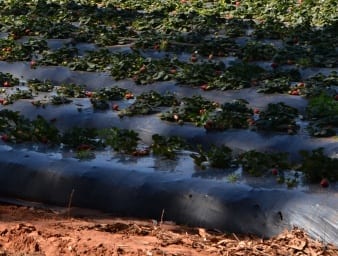
Tip 2 – Soil prep is important so plenty of organic matter plus dynamic lifter, blood and bone, or any high nitrogen fertiliser dug into the soil at planting will get your strawberries off to a good start for the first few months. Then liquid feed every few weeks after with a liquid fertiliser lower in nitrogen (commercial or home made).
Tip 3 – For subtropics, start your strawberries in early-autumn for maturing in winter and then continuing into spring (although the commercial season finishes in early spring). Trick the plants into thinking they've be

According to Adrian strawberries perform better after a chill to encourage the plant to fruit and flourish. The washing of the roots and sticking them bare-rooted into the fridge won't harm the young plants…amazing.
Tip 4 – Even though slightly acidic soils are best for Strawberries, they do love calcium and plenty of it, so a sprinkling of dolomite or lime watered in throughout the growing season is recommend by Adrian to fatten up the fruit and help give them a rich sweet taste.
How do I grow my strawberries?
Take advice from others
I'm always learning and open to opinion no matter if I am successful at growing a particular plant or not and strawberries are no different in my book. Not every strawberry season of mine turns out to be a bumper crop for one reason or another; that's life, and I like to try and find out what didn't work and w
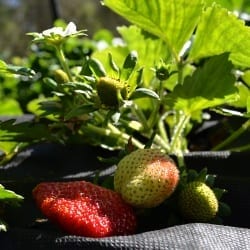
I do this by checking the bed after the season for pest or soil problems, checking my irrigation to see if water was getting to the whole crop area, and comparing mental notes of what I may have done differently during the season etc.
Often, the reasons for a lacklustre crop in the backyard are due to conditions beyond our control (or possibly understanding). If my crop is not doing the best, I take a walk to my nearest strawberry farm and see how they are doing (lucky for me it's just down the road). 9/10 times I find when I'm having a mediocre season, they are too – this is the same with a lot of my other fruits incidentally. We might have a poor mango season here in the backyard and then hear on the news mangoes are in short supply this year – well there ya go… Last season we had a terrific crop of oranges, and so did the whole of Australia; oranges were cheap as chips!
Obviously, I take heed of all Adrian’s tips and because I live in the subtropics I follow his winter rule and pre-chill advice because in the past I would plant my strawberries too late and they weren’t as successful as they could have been if planted and grown in autumn/winter.
Soil and planting
After I have manually chilled my plants (see tip 3 above) I replant them back into the garden. I do have a semi-permanent raised bed exclusively for my strawberries but I totally redo the patch each season by digging up the whole patch, re-vitalising the soil (similar to tip 2 above) and by adding compost, manure, and replanting runners, new plants, or healthy mature plants (which I have saved) ready for the next season. My manure and compost are what I can freely get, which consists of manure from the pony club and my quail/chicken poop mix from my birds.

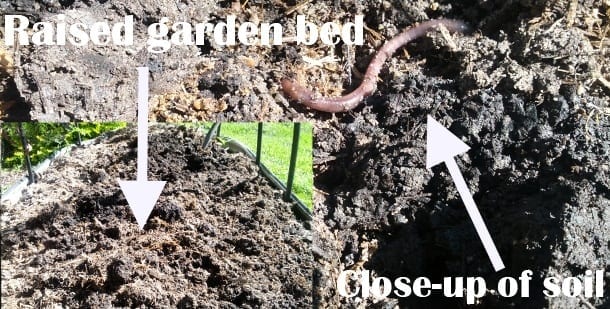
Soil full of organic matter and organisms with a well rotted mix of horse and poultry manure works well (above image)
Some people simply remove the runners and keep the plants in-situ for a few seasons and there's nothing wrong with that because strawberries are a perennial. However, I tend to see bigger harvests and better plants if I re-do and re-plant each season, keep some good old plants, and introduce new runners saved from the previous season. Every 2 or 3 years I start totally from scratch and buy all new disease free stock, give the patch a good working over and/or rotate my strawberry location, and this keeps everything fresh.
Raised mounds in rows lined with light biodegradable weed-matting (the porous stuff that allows water thorough) is a great way to plant the pre-chilled runners. However, I like to make one large mound (large in area and not raised too high) in a raised garden bed not just for good drainage etc but because when the strawberries start fruiting, daily harvesting can become common place and raised beds are a convenient way to harvest as opposed to bending over day after day.

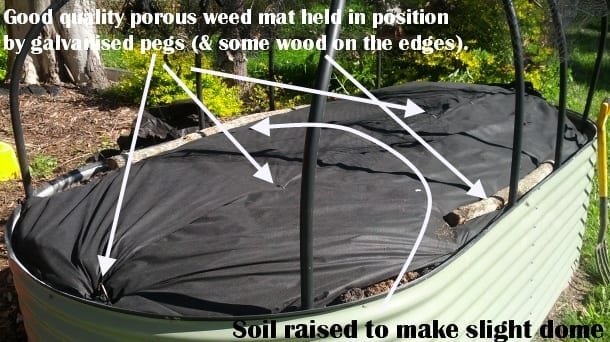
Also, I find having my strawberries in raised beds enables me to protect the crops better from birds and other animals.
When first planting-out strawberries, water must be kept up for the first few weeks (probably daily) to prevent the runners/plants from drying out and dying before they get established. After that, a good watering several times a week, especially in hot weather, is required.

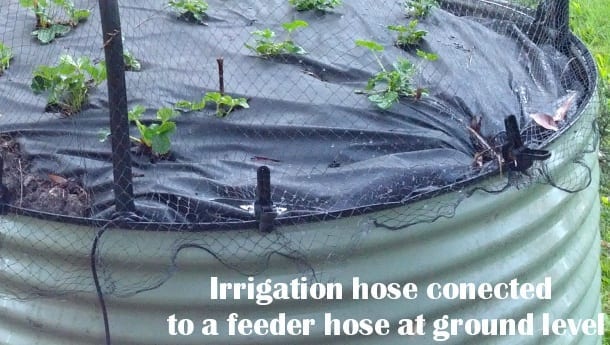
I have a 6 mil drip irrigation hose underneath the weed matting, which I use on a timer if I'm away to ensure the plants get regular water. I spiral the hose around the bed about 30cm apart and about an hour is sufficient to soak the whole bed.

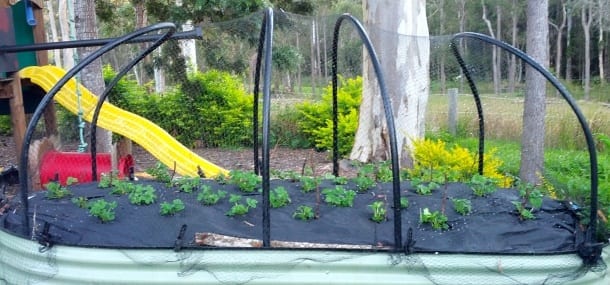
Image above shows newly planted strawberry plants evenly spaced in raised garden bed. The small sticks staked next to some plants signify different varieties and a chilling experiment to see growth differences.
I give my plants an occasional drink of seaweed solution and potash throughout the season. Apart from that, I don't fuss too much over them.
Harvesting
Due to the weed-matting, not only are there less weeds to deal with, but, I have found less strawberries getting spoilt from microbes or rot from lying directly on the ground. Strawberries can be picked slightly unripe to “ripen” later but I think they taste better when harvested ripe (full or almost full colour). Do strawberries ripen after picking? The straight answer is NO but the wishy washy answer is they sort of do if they are picked almost ripe, like, just when the tip is slightly white and the berry is still firm. They do soften a day or two after being picked so it could be considered ripening in my humble opinion.

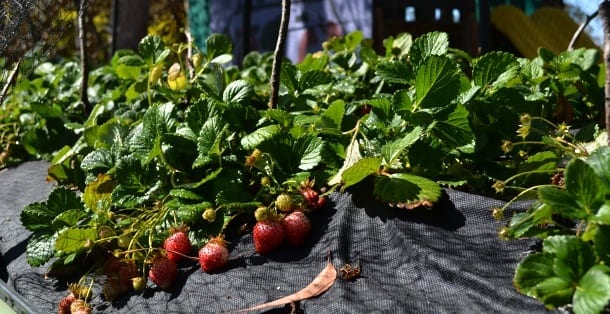
Strawberries grow and ripen fast once matured. The beauty for a home gardener is the staggered fruiting reducing gluts and enabling fruits almost daily (3/4 season – above image).
Once strawberries start to ripen the plants should be checked regularly (at least every few days) because ripe strawberries can perish quickly so they're better off in someone’s mouth then left for the fermentation flies to eat. For easy harvesting use a small scissors to cut the fruit from the strawberry plant.
Pests and diseases
In my experience, strawberry plants are very hardy in the home garden and they should never need any chemical sprays to prevent disease or stop pests. Strawberries are a “soft fruit” and chemical residue isn't easily washed off a strawberry fruit so I grow them without sprays and always achieve fair yields.
Slugs and snails may nibble on the fruits as they begin to ripen and this is usually visible by a round gnaw mark a few mils deep and several in diameter. Snails and slugs can become a problem but are easily controlled by picking them off in the early morning or at night, and using home-made remedies (like beer in a bottle on it's side), or snail pellets.
Birds and animals can also be a reasonable pain in the proverbial just as the berries are ripe for picking. I have possums at my place and they love my strawberry plants berries and leaves! I have a simple netting method which solves this issue and turns my strawberry stealing foes into mere observers.
I use cheap irrigation hose (25mil @ 25 metres for about $20) and I cut it in about 3-4 metre lengths feeding it over some thin bamboo garden stakes secured into the ground and making a tunnel over my patch. Then, I place a 4×4 metre piece of bird netting ($7) stretch and secure it with $1 plastic clips. The hose bends at the ends but doesn't break over making the design symmetric. Specifically designed nets for raised garden bed can be purchased retail but they cost hundreds. All these materials should last a good 5 years before they may need replacing (see images throughout this article on the design).
Strawberries can get various fungal and leaf diseases and suffer from a lack of nutrient uptake in poor soils like magnesium, iron, and manganese with symptoms like foliage dying off, leaves changing colour, poor fruiting. Adding a soluble trace element should help to perk the plants up.

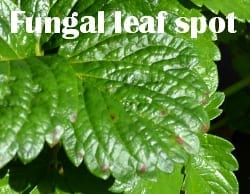
My plants tend to always have some minor fungal problems here and there (like leaf spot) no matter how new they are or what precautions I take; however, I don't ever have a need to spray a fungicide and the plants happily get by with a little pruning and care.
Conclusion
I know this was a lengthy article but that's how I roll… err, blog; however, I think strawberries in the home garden are wo
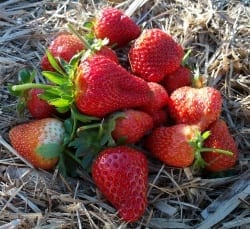
All that is required is a small investment in some seedlings and a treat of strawberries becomes a regular snack for the whole family over 3-4 months and all produced from the backyard. And, if space is an issue then strawberries are the crop to grow because they can be grown anywhere and in anything no mater how small the area may be.
Strawberries, cream, and tennis…heaven.
Feel free to use the comment section below and have your say (no email is required). Or, even better join our forum! I have started a conversation about this article on our forum so if you have any questions or would like to discuss this topic just follow the link.
Thanks for reading and thanks for your support.
Look, and see the Earth through her eyes
Mark Valencia – Editor SSM


